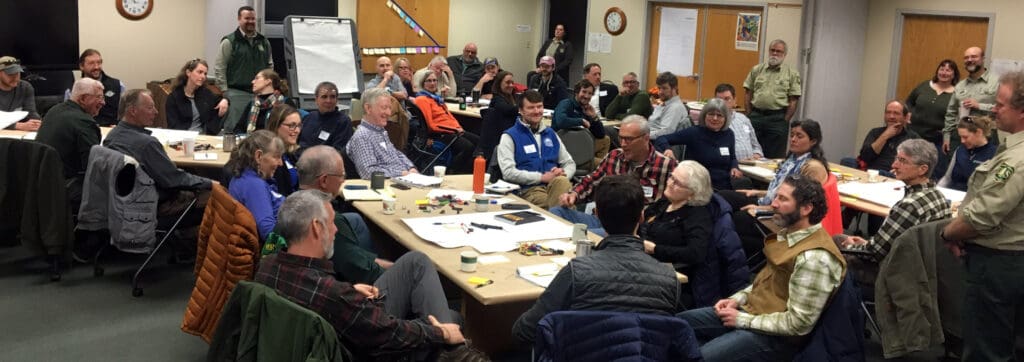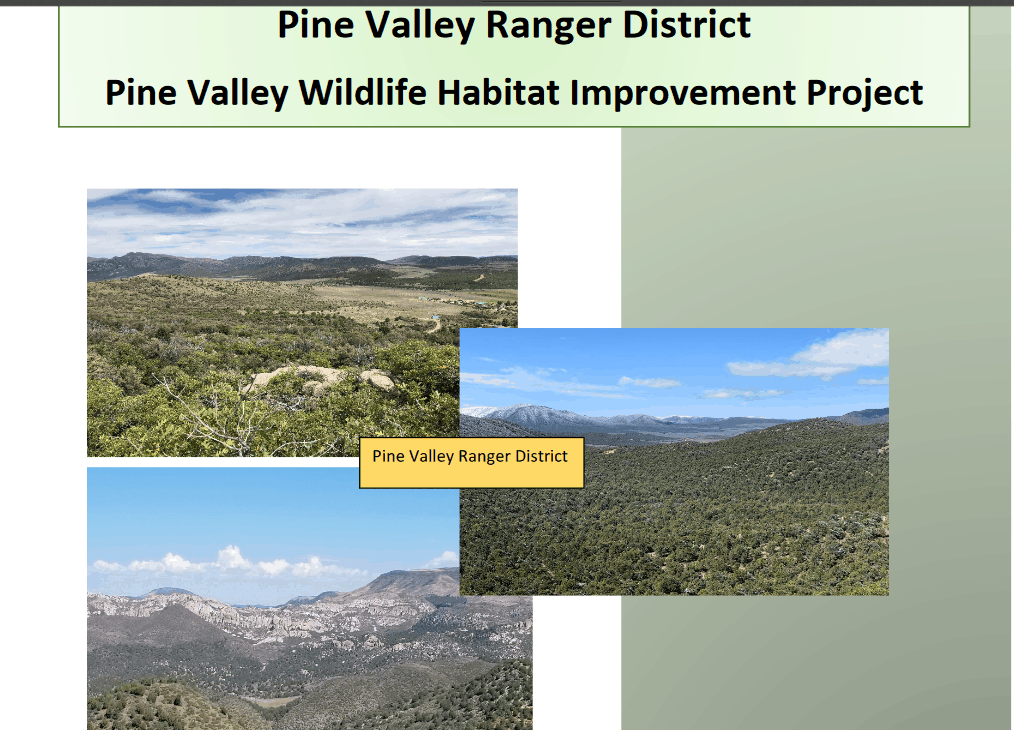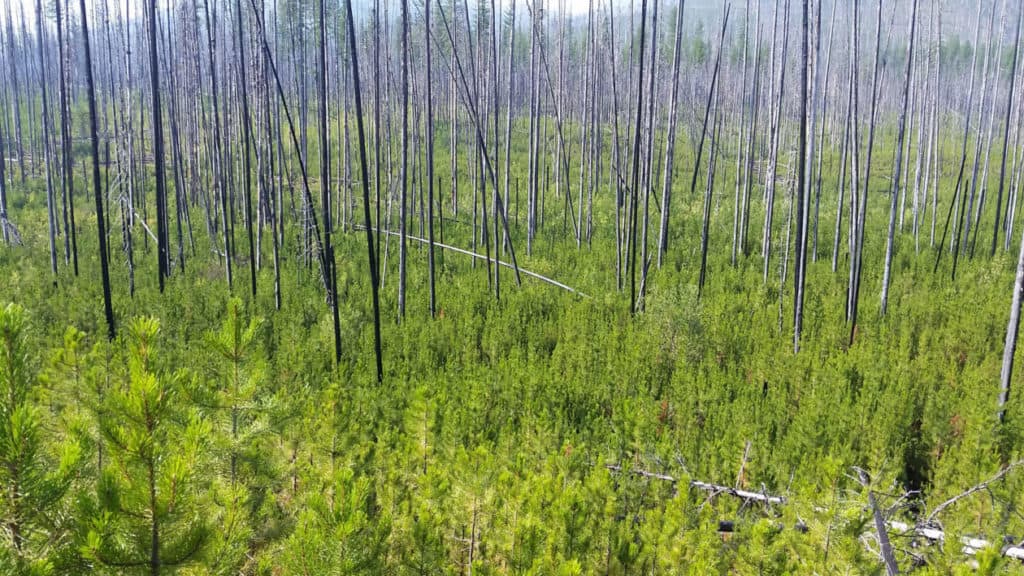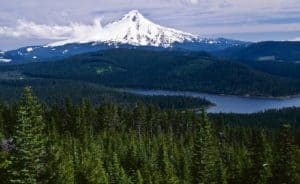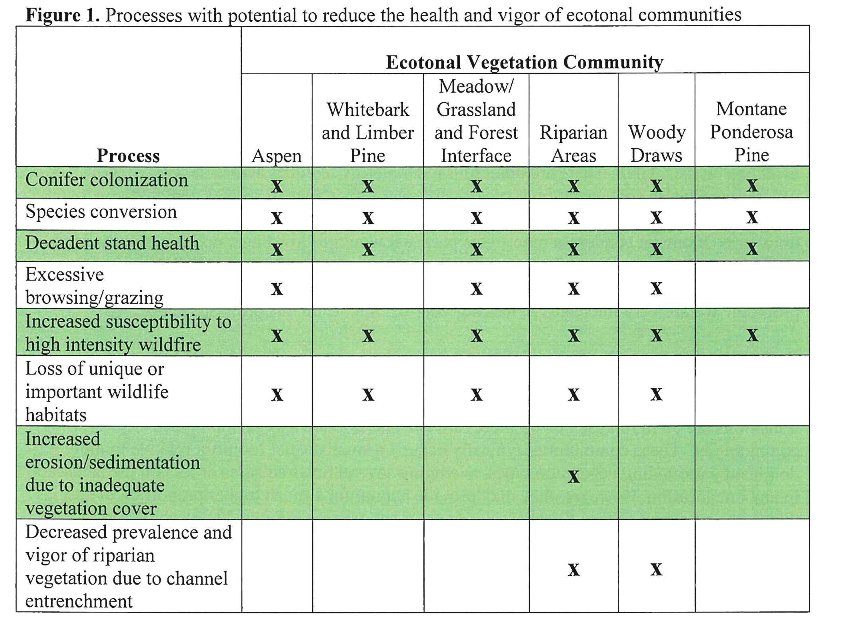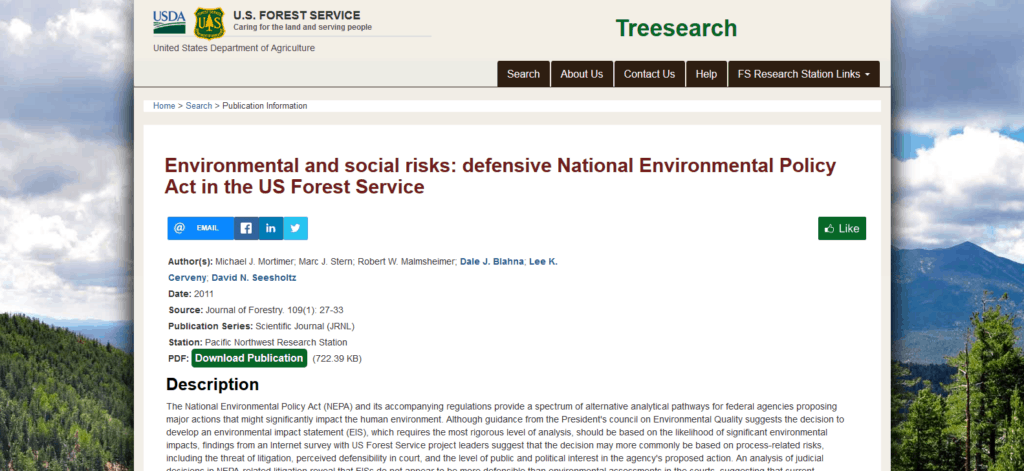
If you look at the history of the need for NEPA improvements (currrently EADM), we need to look at the results of the NEPA for the 21st Century project. It was an effort funded by the Forest Service specifically to look at NEPA improvements. Since it can be difficult to find all of the papers, I thought it might be useful to post them and discuss them again in light of the recent Fleischman et al. paper and ongoing NEPA discussions. Dave Seesholtz was the leader of this effort, and also produced a very useful annotated bibliography of the journal articles, so many thanks to him for this work.
Let me make my point of view perfectly clear here. There can be many improvements to the way NEPA is done, as evidenced by the suggestions in the EADM process, and by my own experience with Process Predicament (a previous NEPA improvement effort). Nevertheless, litigation and litigation prep is one of many factors that can slow projects, especially certain kinds of projects, in certain places. To me there is a difference between what we might call NEPA “a” involve the public, assess the impacts, and tell people why you made the decision, or “b” make a document that is legally defensible. For me, once you go down the road that “a group with a litigation history has expressed serious concerns” you are inevitably into “b” which tends to take much extra work. Your target audience has shifted from the broader public to a judge, and your required level of explanation expanded mightily. And finally, if litigation didn’t slow down or stop projects, why would people keep spending money on doing it?
So I think the time has come, at the risk of boring everyone else who isn’t interested in discussions of improving NEPA, to post each paper in the N21C collection and have a discussion about each. We can include the approaches, how that fits with our own experience, and so on. If you want to skip these discussions, just avoid posts withe the N21C title.
I’ll start with Dave’s summary of the 2011 Mortimer et al. paper.
Mortimer, M. J., Stern, M. J., Malmsheimer, R. W., Blahna, D. J., K, C. L., & Seesholtz, D. N. (2011). Environmental and Social Risks: Defensive National Environmental Policy Act in the US Forest Service. Journal of Forestry, 27-32.
This article presents findings from three research efforts—interviews with federal land agency employees; an online survey to USFS ID team leaders; and an analysis of federal court cases—that suggest USFS leaders base project decisions more often on process-related risks than on the likelihood of significant environmental impacts. CEQ regulations state that an Environmental Impact Statement (EIS) should only be triggered by possible significant environmental impacts; however, this research demonstrates that potential socioeconomic and cultural impacts are just as likely as environmental impacts to trigger an EIS process instead of an EA process. The authors point out that these represent two different types of risk: resource risk, those impacts that threaten the natural resource, and process risk, which threaten the USFS’s work through increased public opposition. The latter should not be considered as a reason to do one type of NEPA process over another, and yet, this research shows that the choice to do an EIS process might be driven by perceived process risks. From the 106 ID team leader respondents, 72% ranked “degree of public interest/controversy” and 49% ranked “likelihood of litigation and appeals” as one of their top three reasons for having chosen to do an EIS process instead of an EA process. Only 31% ranked “likely environmental impacts” as one of their top reasons to do an EIS, despite the fact that statutorily this is supposed to be the primary, if not only, reason to do an EIS instead of an EA. The authors also confront the prevailing perception that EISs are more defensible in court due to their more thorough level of analysis. Evaluating the outcome of lawsuits against the USFS in which the plaintiff alleged that the agency had violated NEPA in land-management projects from 1989-2006, the authors found that the EAs are no less successfully defended than EISs. Pulling these findings together, the authors note that USFS personnel might be losing sight of the forest for the procedural trees as they base their decisions on perceived process risks rather than furthering NEPA’s underlying purpose to generate more environmentally sound decisions. Pragmatically, this excessive risk aversion is likely leading to excessive and unnecessary analysis, which, in addition to being time-consuming and expensive, causes “unintelligible” documents that are more likely to obfuscate than disclose decision making.
Main Finding: USFS decides to do Environmental Impact Statements because of potential public controversy and perceived litigation threats, not because of potential environmental impacts. Court decisions show that EISs are not more legally defensible than EAs—suggesting that decision making around NEPA processes is misguided and is causing unnecessary project expenditures and delays.
Recommendation: continued research on how ecological and social risks are used to make decisions
Methods: amalgam of three research efforts; interviews, survey, and court records review
Research Perspective: analysis type
Themes: document creation, litigation avoidance, risk management
*************************************************
Sharon’s thoughts: if you read the paper itself, there’s a lot to discuss. But here are some quotes from interviews: “25 respondents in the US Forest Service
(n = 8), the National Park Service (n = 6), the Bureau of Land Management (n = 9); and the US Army Corps of Engineers (n =2) in the winter of 2006-2007. ”
Reasons for doing an EIS
• The threat of litigation and the ability to withstand legal challenges:
Our solicitors push us to, they would much prefer us to do an EIS because it’s easier to defend in court.
The decision with sometimes doing an EIS is whether it’s going to litigation or not …
• The desire or ability to incur or demonstrate significant environmental impacts on the landscape with an E1S:
If you really want me to have an EIS, then 1’m going to go for the gusto and have some significant impacts.
We had no idea what the outcome was going to be, hut with an EI5 you can have a significant effect. And we wanted to have a significant effect on the landscape.
• The level of public controversy:
If you have more than a 30% suspicion t.�at if you try to go the EA route someone is going to stop you or threaten to sue you, you’re better to … put your Notice of Intent out, circulate a draft EI5.
How many times have we heard “the FS should have done an EIS for this project.” Most recently, Jon said this about the Crystal project on the Mt. Hood.
“Under NEPA, evidence of scientific controversy requires an EIS to fully explore how the use of that science may be important to determining environmental impacts.” As I said in comments on that thread, if that’s the criterion “scientific controversy” then every controversial project will need an EIS.
What do you think of the ideas in this paper?
